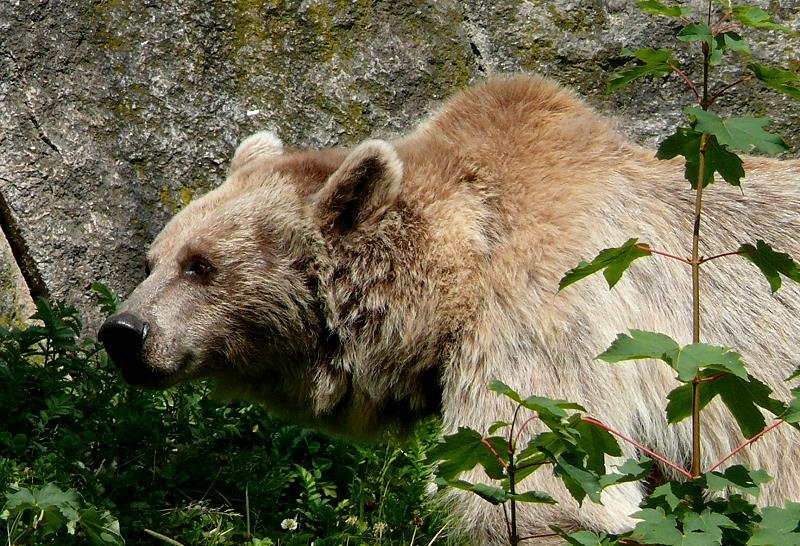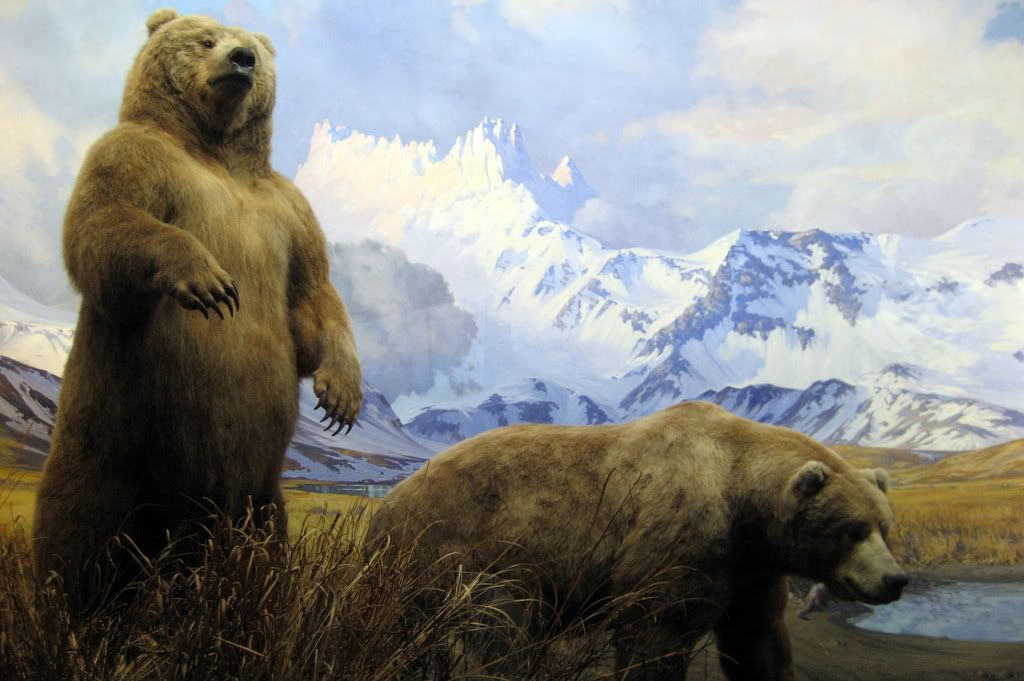|
|
Post by warsaw on Feb 21, 2011 8:36:40 GMT -9
Cave bear  |
|
|
|
Post by warsaw on Feb 24, 2011 6:30:03 GMT -9
The story of the polar bear skeleton. The specimens here are homemade and they are the result of the veterinary medicine department teachers’ and the students’ efforts in the last couple of decades. These cadavers are donations of various sources such as individual donations, public sectors, and non-governmental organizations. The source of the polar bear skeletal specimen is considered quite special. In the summer of 1980, a European circus was performing in Kaohsiung. The circus comprised a large number of performing animals including a group of polar bears. The weather was hot and humid at the time and potentially due to elevated stress level from performing, an adult male polar bear died unexpectedly. In order to clarify if the cause of death was contagious, the polar bear was rushed to the Department of Veterinary Medicine of Taiwan Provincial Pingtung Institute of Agriculture for postmortem pathological examination and etiological culture. The result indicated that this was simply a case of death caused by heat shock and the concern of possible malignant contagious overseas disease was finally lifted. The carcass was going to be cremated after the examination was completed. However, since it was confirmed that the death was not caused by disease, it was intended to make the carcass into a skeleton specimen. After obtaining the permission to donate the carcass from the circus leader and completing all relevant legal procedures, the carcass was made into teaching skeleton specimen a year later. For the past 27 years, this specimen experienced some large scale relocations. It was first moved from the Northern Campus to Neipu Campus and was placed in Room VM012 (currently the Precision Instruments Center). Later it was relocated to its current storage location Room VM110 after Council of Extension Education and Services moved out of the Veterinary Science department. In 2006, a very heavy rain flooded the first floor where the water rose up to 20 to 30 centimeter in a very short time. All the specimens placed on platforms closer to the ground were all soaked in the water, including the polar bear. Consequently, moulds started growing on the surface of the bone. The moulds had to be removed carefully and the restoration effort took several months to bring the skeleton back to its original state. Today, many of the specimen images have been digitalized and some will even be made into 3-D animations to be uploaded on to the Internet. The museum of veterinary anatomy thereby can break through the limitations of time and space and share its special archives ubiquitously. Thanks to unexpected surprises and twists in life, the Polar Bear stayed in Taiwan forever and devoted himself as a teacher of polar bear skeleton. We are forever grateful for your contribution. npuir.npust.edu.tw/xml/show_img.jsp?file_name=NPUST-VM-VMWDm007_002_SK_RtLat-001-i.jpg&img_size=bignpuir.npust.edu.tw/web/feature/featuredetail_eng.jsp?feaid=3 Nina the polar bear was brought to Bristol Zoo from Copenhagen Zoo in 1964, to partner polar bear Sebastian. In the early 1980s Sebastian died and was replaced by Misha, a Russian circus bear. Misha and Nina both lived into their thirties, a very good age for captive Polar Bears, but sadly both had to be put to sleep in 1992. The post-mortems were carried out at the University’s Veterinary School at Langford and the bones were subsequently sent to the Department of Anatomy for reconstructive work. Nina’s skeleton is now on display at the Pre-Clinical Veterinary School on Southwell Street. www.bristol.ac.uk/centenary/look/cabinet/polar-bear.html |
|
|
|
Post by warsaw on Feb 24, 2011 7:53:52 GMT -9
|
|
|
|
Post by warsaw on Feb 25, 2011 12:50:56 GMT -9
|
|
|
|
Post by grrraaahhh on Feb 25, 2011 14:36:54 GMT -9
 Syrian brown bear |
|
|
|
Post by grrraaahhh on Feb 27, 2011 13:49:54 GMT -9
|
|
|
|
Post by grrraaahhh on Mar 4, 2011 11:00:37 GMT -9
|
|
|
|
Post by warsaw on Mar 5, 2011 4:14:33 GMT -9
|
|
|
|
Post by warsaw on Mar 8, 2011 12:23:50 GMT -9
|
|
|
|
Post by grrraaahhh on Mar 9, 2011 6:01:20 GMT -9
Popular Alaska Brown Bear (Ursus gyas merriam) Diorama.  |
|
|
|
Post by grrraaahhh on Mar 10, 2011 5:42:47 GMT -9
  Left: Giant Kodiak Bear taken by W. M. Hollinger, accompanied by son Franklin, at Kodiak Island, Alaska. One of the largest bears ever seen by man. Approximate weight 1500 pounds. On exhibit at the Blue Mountain Hotel, Harrisburg, Pennsylvania. Right: Alaskan Brown Bear, University of Alaska Museum.  The bears at Bear Mountain are in the Trailside Museum, a short walk from the Bear Mountain Inn. The name "Bear Mountain" was given to the mountian overlooking the Playfied because it resembled a reclining bear.  St. Louis Zoo. www.cardcow.com/ |
|
|
|
Post by grrraaahhh on Mar 10, 2011 8:47:15 GMT -9
|
|
|
|
Post by warsaw on Mar 10, 2011 9:35:24 GMT -9
|
|
|
|
Post by warsaw on Mar 10, 2011 9:45:20 GMT -9
|
|
|
|
Post by grrraaahhh on Mar 15, 2011 7:24:50 GMT -9
 From the Philadelphia natural science museum, Polar bear diorama. |
|